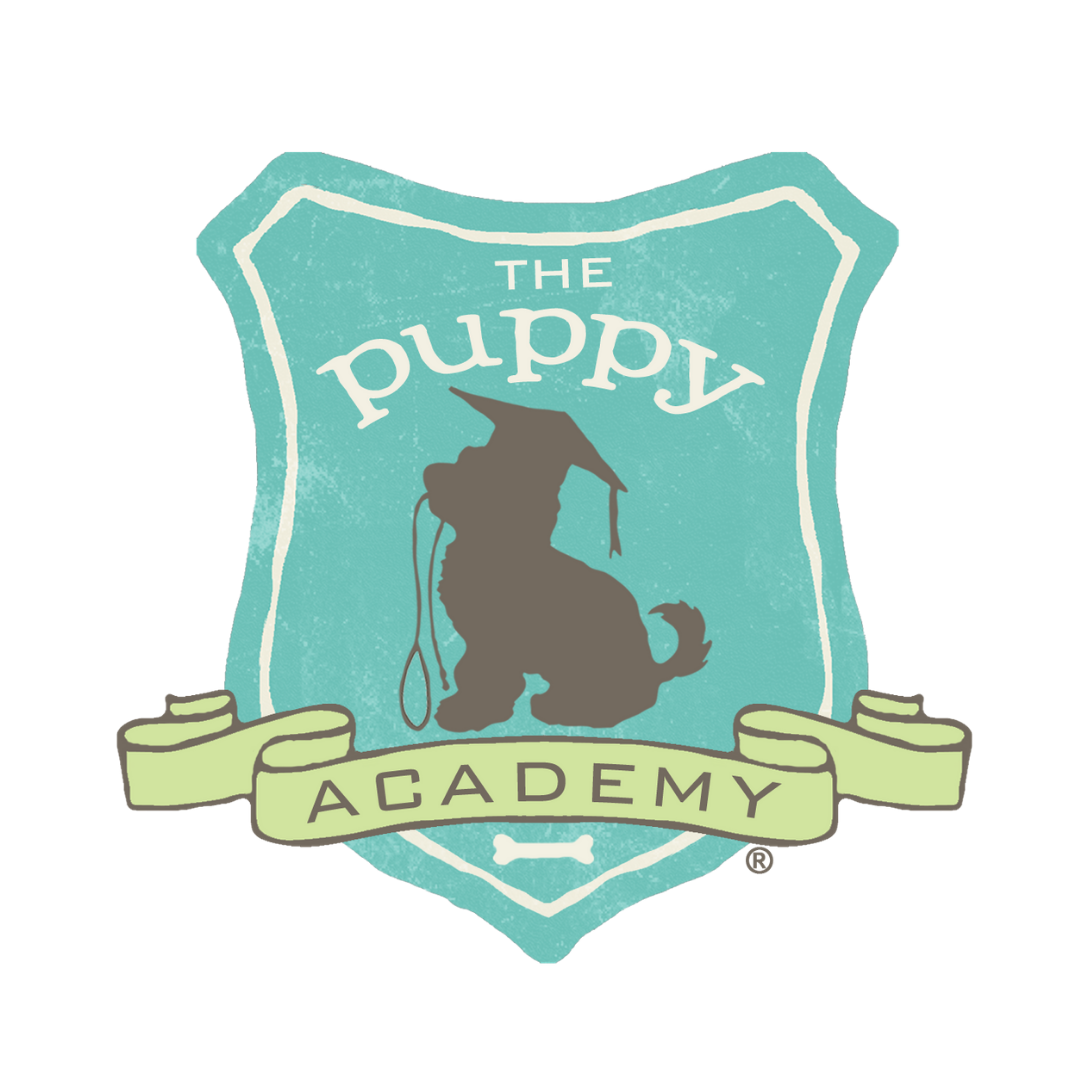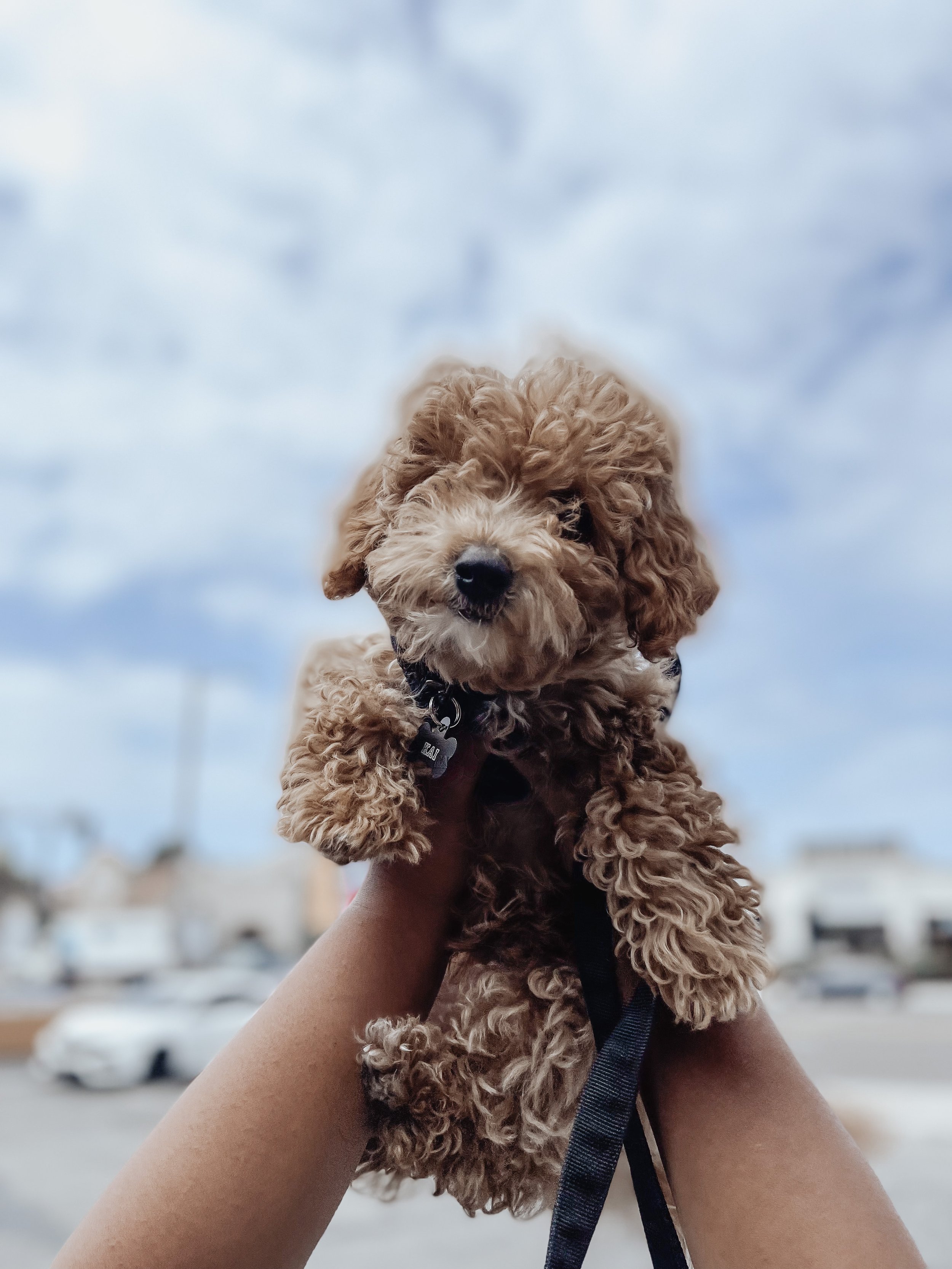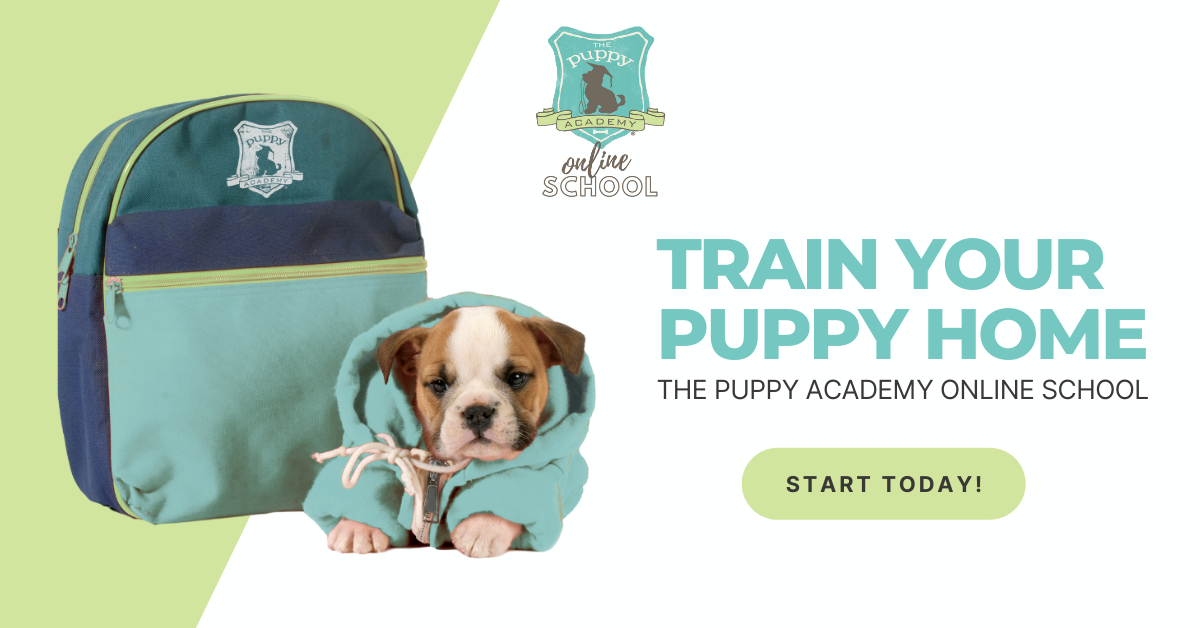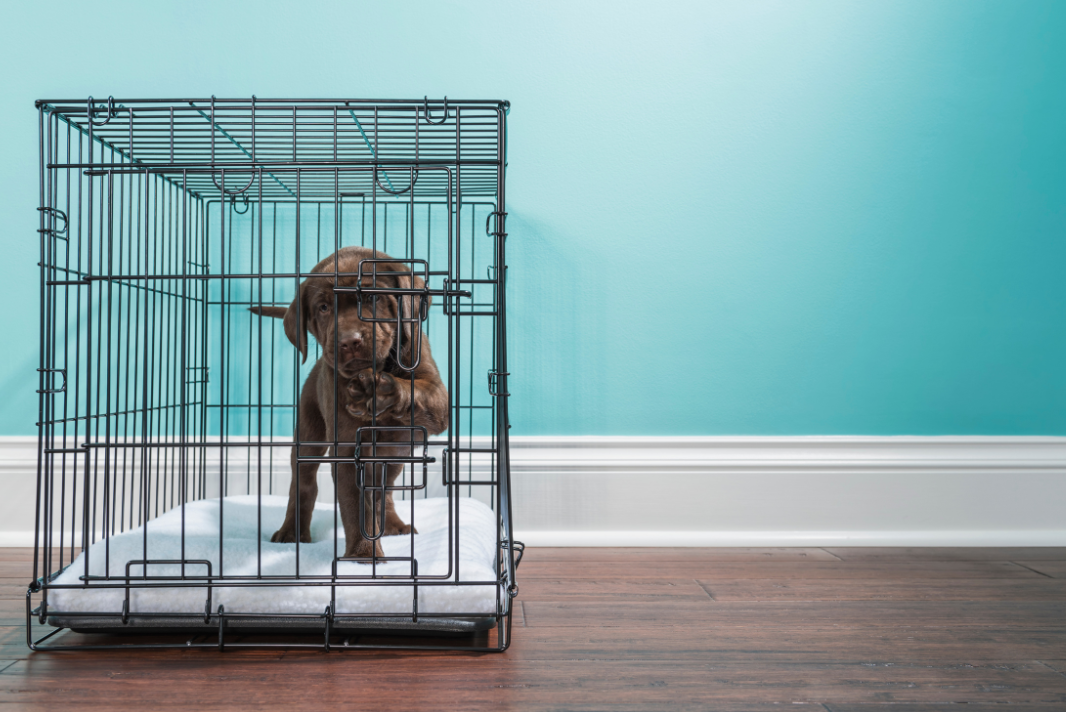You’re about to embark on the fun and sometimes crazy world of puppy parenthood! It’s a time to celebrate for sure, but when bringing home your new puppy, there are also a lot of things to consider. Preparing your home beforehand and having a plan are great ways to relieve that stress and feel ready for when your new addition arrives! Here are our favorite preparation tips and supply recommendations to help you on your way!
The Puppy Academy student, Kai!
Congratulations on your new puppy! If you are a first-time owner, one of your very first responsibilities as a puppy parent is to get some preparations in order before your puppy comes home.
This involves preparing your residence with a few safety checks, getting the right supplies for your puppy, talking with family about responsibilities and schedules, and doing some research!
One of the biggest parts of bringing home a new puppy starts right before they come home! That’s right -- you’re already a puppy parent! Your puppy will depend on you for everything they need: food, shelter, safety, proper guidance and love.
Safety is especially crucial as young puppies are starting to explore the world on their own and understand their limits. So it’s up to you to make sure that while they continue to grow and explore, they won’t get into potentially harmful situations as they begin to learn what their boundaries are in their new home.
But, if you aren’t really sure where to begin, we’ll walk you through the top things you can do to be properly prepared for your new puppy!
JOIN OUR VIP (VERY IMPORTANT PUPPY) LIST FOR WEEKLY TRAINING TIPS DELIVERED RIGHT TO YOUR INBOX!
PUPPY-PROOFING 101
If you have never heard of this concept before, think about it from the perspective of bringing a crawling baby or toddler over to your home. They want to explore and get into all sorts of things. It’s the exact same for a puppy!
Although it may seem difficult and you’re probably looking around your house thinking it’s OK, chances are there are a few things that you may be overlooking. Bringing home a puppy requires some prep work of removing potentially harmful things and situations, for both your peace of mind and your puppy’s safety. Here are the top important things to prepare in your home:
Cables and Electronics
Probably one of the biggest issues new puppy owners encounter is having their puppy chewing up electrical cables and electronics. These items are like puppy magnets because they are low to the ground and accessible. If your puppy is in the teething phase, it’s the easiest target to chew and soothe their gums. But cables can cause electrical burns in your puppy’s mouth and if they ingest pieces, blockage in their intestines. Start by removing any that you can, covering them up, or making sure cables and devices like TV remotes and other electronics are well out of your puppy’s reach.
Trash Bins
Food is a definite magnet for a curious puppy. And a trash bin full of leftovers and other interesting smelling things will be a big target! A puppy’s stomach is very sensitive, and most human foods are over-processed and seasoned, which can cause serious stomach issues. In this scenario, the best suggestion is keeping the trash and recycling bins away from your puppy altogether. And don’t forget about the bathroom trash bins! Puppies love to reach in and grab for soft papery things like Kleenex. Make sure your bins have lids or keep the bathroom door closed. If you plan on keeping your puppy in the kitchen, consider moving the bins to another room or outside until your puppy is older, more trained, and can be trusted to not rummage the bins. But for those that can’t relocate their bins, safety locks on cabinets and child-proof lids are good alternatives!
Cleaning Supplies and Medicines
Depending on where you plan to keep your puppy in your home during the first few weeks, it’s always a good idea to make sure items like household cleaning solutions, laundry detergent, and even medicines are put somewhere out of reach or locked so your puppy doesn’t accidentally get into them. The last thing anyone wants is for your puppy to ingest something that will land them in an emergency vet visit. Another good tip is to keep emergency information readily available such as the ASPCA Pet Poison Hotline just in the event that your puppy does ingest something. Take some time before you bring your new puppy home to do some research on specific items that you have at home and whether or not they are pet safe!
Give Your Puppy a Space of Their Own
From day one, you should provide your puppy with a designated space of their own that they can begin associating as their area. You can do this by setting up a playpen with their crate inside and some room to play. This will be their primary place where they will rest and play safely. You can even use it for feeding, and set up potty pads, if needed. Setting up a space like this begins to create boundaries, which is crucial for your puppy's safety and to begin their training — and it’s never too early to start puppy training!
For an easy-to-follow puppy raising blueprint that outlines exactly what to do with your new puppy, how to do it, and helps you every step of the way through puppyhood, check out our Online Puppy School! All classes are virtual so you can do them on your own schedule, and even start them before your pup arrives home so you’re extra-prepped! You also get access to our master puppy trainers every week to ask them any questions you may have. For more info, check out The Puppy Academy Online School!
At The Puppy Academy, we recommend for our new puppy parents to restrict the areas in the home your puppy has access to. Then as your pup gets older and can be trusted more, you can start to increase that area to more rooms in your home. You can use baby gates in doorways to make sure they aren’t getting into rooms they shouldn’t be and potentially having accidents when you’re not looking! That goes especially for puppies that aren’t housebroken yet. You should be thinking of any free time they spend outside of their crate or playpen as “monitored free time” meaning: if your pup is out — you need to be watching!
“It’s important for a new puppy to have their own designated area they know is theirs, which includes things like their bed and crate. Use a playpen to help define this space, which also gives your pup a safe place to be in. ”
TIME TO GET SHOPPING!
Aside from puppy-proofing your home, you’ll need to get together essential items for when you bring home your puppy! And if you’re new to puppy parenthood, the abundance of puppy supplies, toys, accessories, training tools, etc., can be very overwhelming! Start by first thinking about your puppy and their needs based on their age and breed. Are they teething still? Are they potty trained yet? Will they require a lot of grooming? Ask these questions to yourself, do some research on their breed, and talk to their breeder or rescue organization before you get them. This will help you get the right supplies to fulfill each of those needs.
What you should end up with are things that will fall under categories like food, toys, grooming, cleaning, and safety, to name a few! For our favorite puppy items we love and use with our pups in class with us, visit our Amazon Store for our top recommendations!
JOIN OUR VIP (VERY IMPORTANT PUPPY) LIST FOR WEEKLY TRAINING TIPS DELIVERED RIGHT TO YOUR INBOX!
“Do your research to know your puppy’s breed and common tendencies they may have. This will give you an idea of what to expect and what they’ll need.”
TALK WITH YOUR FAMILY
You might be thinking it’s a given that the whole family is ready for all the puppy responsibilities, but as much as everyone is excited and anticipating bringing home a new puppy, it’s a big adjustment for all those involved! You’re going to be adapting to a new family member in the household and during the first few weeks, it’ll involve some sleepless nights and hard work as your puppy settles into their new home and new routine. Puppyhood can be tough at times but remember to be patient with your puppy and enjoy the process as much as possible -- they grow up so fast!
Plan a family meeting before you bring home your new puppy to establish and divide up responsibilities around caring for your new puppy. This is also a time to come up with boundaries and rules such as will the puppy be allowed on the bed, the couch, etc., and be certain that everyone is on board so you can create consistent behaviors that your puppy will learn! Do you have a daily schedule for your puppy yet? Having a plan for everyone to follow will make daily life for you (and your puppy!) much easier. Learn how to create one here!
PICK YOUR PUPPY’S VET AND CARE TEAM
During the first couple of weeks of your new puppy’s life with you, they should visit their new vet for a wellness exam to make sure they’re in optimal health and set up a vaccination schedule. Have you picked out your veterinarian yet?
Even if your puppy has already seen a veterinarian with their breeder, shelter or a previous owner, it’s still a good idea to bring your puppy in to see a vet shortly after you get them to get your puppy fully checked out, on the right track, and to establish this new relationship with your vet.
If you are unsure where to start looking for a reputable vet, word-of-mouth is a great way to find a trusted vet in your area. You can even ask around at your local pet businesses for recommendations! Make sure that your puppy’s first vet visit experience is especially pleasant by bringing along a special treat with you and rewarding them for their good behavior! This will help set the stage to make all future vet visits a calm and enjoyable experience. For more help with your pup’s first vet visit, check out our blog: What to Ask Your Vet on Your Puppy’s First Visit!
Another good professional to have on your puppy care team is a puppy sitter and dog walker! If you work long hours during the day or have to travel often, it’s a good idea to find reputable professionals in your area that will be available to help you out. It would be a good idea to meet with them first, get to know their style, what they offer and see if they would be a good fit for your puppy and your lifestyle. Word-of-mouth recommendations work super well in this case especially if they come from your vet, a puppy trainer or a fellow dog owner!
The Puppy Academy student, Kuma!
GET READY TO BRING HOME YOUR NEW PUPPY!
Puppy parenthood is a wonderful time! Yes, there are some challenging times too, but remember these are usually temporary! Setting you and your puppy up in the best way beforehand and ensuring you have the right support (breeder, vet, puppy trainer, etc.) can make puppyhood much easier!
Remember to take it slowly at first and be patient with your puppy and yourself. And if you have any puppy questions that come up, ask our trainers! Join our live Ask A Puppy Trainer Show Q&A every Wednesday at 1pm PT on our Instagram @thepuppyacademy!
For more training tips as your puppy grows, join our VIP Very Important Puppy list to receive our latest tips right to your inbox every week!
Check out these related blogs on puppy training and more!
How to Get Your Puppy to be Calm in Their Crate







